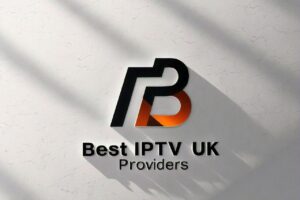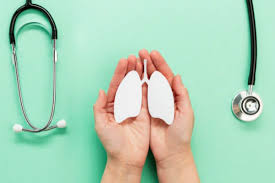One kind of healthcare fraud that is getting more common and worrying is respiratory fraud. This fraudulent conduct includes dishonest actions by medical professionals or institutions that lead to needless procedures, exaggerated billing, or bogus claims for respiratory services. It can be anything from invoicing for services never provided to inflating the severity of ailments to support greater prices. Patients, insurance companies, and healthcare systems alike must comprehend and spot respiratory fraud given the growing expenses of healthcare and the serious effects of respiratory diseases.
Preventing respiratory fraud and its expensive and maybe dangerous consequences requires knowledge of its warning indicators. Receiving bills for services never rendered, spotting inconsistencies in medical records, or dealing with aggressive physicians pushing pointless procedures are some warning signals. Respiratory fraud accounts for a large amount of the $68 billion in healthcare fraud that the National Health Care Anti-Fraud Association estimates is the country’s annual cost. Patients may protect their finances and health by being alert and knowledgeable, and insurers and regulatory agencies can better identify and stop these fraudulent acts.
1. Suspicious Billing Practices
Healthcare billing methods that seem unusual are a big warning sign of fraud, including respiratory fraud. The practice of charging disproportionately high prices for straightforward operations is a frequent one. A patient might be overcharged, for instance, for a standard check-up or a basic respiratory therapy session. Large financial losses result from these exaggerated fees, which are intended to take advantage of patients and insurance companies. To put it another way, the National Health Care Anti-Fraud Association estimates that healthcare fraud costs the United States about $68 billion annually.
A further alarming practice is charging for services that were never rendered. On their statements, patients may see costs for procedures or tests they never had. Duplicate billing—billing for the same treatment more than once—is another popular tactic used to artificially raise healthcare expenses. Together with taxing the healthcare system, these activities damage patient-provider trust. People may defend themselves and support the larger effort to stop healthcare fraud by keeping themselves aware and alert about these billing anomalies.
2. Unnecessary Treatments or Tests
A major clue to respiratory fraud is the routine use of expensive respiratory therapies without adequate rationale. Patients may wind up paying for costly treatments that provide little to nothing for their health. For instance, a mild respiratory infections may receive expensive, sophisticated therapies meant for severe cases. Along with raising medical costs, these subject people to pointless operations. Research by the National Health Care Anti-Fraud Association highlights the vital need for vigilance by stating that such fraudulent activities result in the loss of billions of dollars annually.
To report respiratory fraud, it should also be done when diagnostic tests are overused. When there is no obvious medical need, patients may have repeated testing, including pointless chest X-rays or pulmonary function tests. In addition to typically just helping the physician line their pockets, these repeated treatments have no effect on patient outcomes. Patients who misuse diagnostic testing run the danger of needless radiation exposure in addition to financial hardship. Patients can prevent becoming victims of fraud and guarantee they receive suitable and efficient care by realizing and challenging the need for recurrent and expensive treatments.
3. Inflated Medical Equipment Costs
An often employed strategy in respiratory fraud is to overcharge for medical equipment. Patients could get charged significantly more than necessary for necessities like CPAP machines or nebulizers than they need. In addition to taxing the patient’s resources, this procedure raises healthcare costs, like whistleblower law firm costs generally. Healthcare fraud, including exaggerated equipment costs, adds billions of dollars a year to the country’s healthcare costs, underscoring the necessity for closer examination, according to the National Health Care Anti-Fraud Association.
Another facet of this fraud is the invoicing for equipment that was never needed or used. Patients may notice charges for equipment they never received or for items not necessary for their treatment, and this can cause respiratory distress to patients Suppliers may also recommend unneeded upgrades or add-ons, such as a more expensive model of a gadget with features the patient doesn’t need. Patients and insurers are sacrificed in order to maximize revenues through these strategies. Patients may better safeguard themselves against these dishonest tactics and make sure they are only paying for what they actually need by keeping themselves updated about the true costs and necessity of medical equipment.
4. Patient Record Manipulation
Inaccurate use of patient records to support needless procedures is a major problem in the healthcare sector, especially for respiratory therapists. To make it seem as though more involved and costly procedures are required, healthcare professionals may falsify patient records. To justify using expensive respiratory therapies that the patient does not really need, a physician could, for example, inflate symptoms or create false medical histories. This immoral procedure not only raises healthcare expenses but also puts patients at unnecessary risk of injury and discomfort.
A further component of manipulating patient records is inventing diagnoses or symptoms for patients. In order to support charging for more costly procedures or testing, providers may record symptoms that a patient never had or make totally bogus diagnoses. Sometimes
fraudsters even go so far as to make fictitious patient records in order to file fictitious insurance claims. The Federal Bureau of Investigation reports that annual healthcare fraud costs the US tens of billions of dollars. Through knowledge of these dishonest tactics, insurers and patients may better guard against fraud and guarantee that healthcare resources are allocated wisely.
5. Kickback Schemes
In healthcare, kickback schemes—in which professionals get paid for recommending patients to particular vendors or services—are a concerning problem. Cash payments, presents, or even opulent vacations are just a few of the various shapes these incentives might take. Patient care can be compromised and healthcare expenses can rise when healthcare professionals, such as whistleblower legal firms, put their financial interests ahead of those of their patients. Highlighting the scope of this issue, the Office of Inspector General estimates that fraud, including kickback schemes, costs the healthcare system billions of dollars annually.
A further aspect of kickback schemes is the illegal payment between suppliers and providers of equipment. Whether or not their products are the best choice for the patient, companies frequently offer providers illicit rewards to utilize or suggest them. Such actions can result in increased expenses and worse health outcomes and erode the confidence that people have in their medical professionals. Patients and regulators can help guarantee that decisions about healthcare are made with the patient’s best interests in mind rather than the provider’s greatest financial gain by being alert to the warning indicators of kickback schemes.
Conclusion on Staying Vigilant Against Respiratory Fraud
In summary, safeguarding oneself and the integrity of the healthcare system depends on knowing the primary indicators of respiratory fraud. Suspicious billing practices, such as invoicing for services not rendered, billing for comparatively high costs for straightforward operations, and duplicate billing, are important indicators. Significant red flags include needless treatments or tests, exorbitant medical equipment prices, and kickback schemes. Recognition of these problems can enable people and institutions to spot and deal with possible fraud.
To stop respiratory fraud, one must be very vigilant. Patients should carefully go over their medical bills and records, inquire about any strange fees, and be wary of doctors who suggest expensive equipment or overly aggressive treatments without providing a good reason. Calling the National Health Care Anti-Fraud Association or the Office of Inspector General with any suspicious activity will help expose fraudulent operations and stop more exploitation. People can shield themselves against fraud and help build a more moral and reliable healthcare system by being knowledgeable and proactive.

















